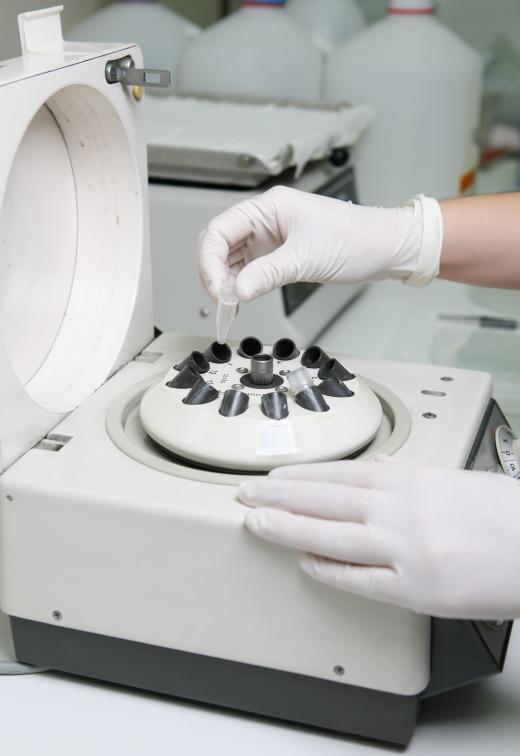What Are the Different Types of Centrifuge?
A centrifuge is a device that spins an object or substance at high speed. This rotational motion generates centrifugal force on the substance in the centrifuge, which pulls particles away from the center of the device. Centrifuges are used in several types of applications, including laboratory experiments and industrial manufacturing. The different types of centrifuge include preparative, hematocrit, analytical and tubular, and each one has its own function.
Swedish inventor Gustaf de Laval is often credited as developing the first commercially viable centrifuge in 1894. His device was used to separate dairy milk from cream. In modern times, the use of centrifuges has moved from the dairy farm to the science lab, where they are commonly used to separate one scientific sample from another.

Preparative centrifuges are relatively large units that are commonly found in chemistry or biology laboratories. This type of centrifuge is used to prepare samples for experimentation. As a preparative centrifuge spins, the particles being tested are pulled apart and isolated. Scientists are able to capture specific kinds of separated particles for use in the lab.

Hematocrit centrifuges usually are smaller than preparative centrifuges and are commonly used for processing medical blood samples. Unlike a preparative centrifuge, the hematocrit type is not used to isolate and capture specific particles. Instead, this device separates blood cells from blood plasma. The number of red blood cells are counted, and the ratio of red blood cells within the entire sample is known as the hematocrit value. Although the blood cells are counted, they are not individually saved for laboratory use.

An analytical centrifuge typically is larger than the previous two types, and it allows scientists to gather information about a sample while it is still within the unit. Analytical centrifuges use optical systems such as ultraviolet light sensors to analyze particles in real time. With this type of device, scientists can observe how changes in centrifugal force affect different particles and can record data without having to stop the rotation.
The previous types of devices are used to process small batches of samples, but tubular centrifuges are able to separate a continuous flow of liquids. This type of device uses an elongated rotating tube with two exit ports. As the tube spins, liquids in the centrifuge are separated based on their density. This separation continues as long as fluids are present and the tube is spinning. A tubular centrifuge essentially operates as a pump that is able to separate liquids, and it is often used to process fuel, oil or ink.
AS FEATURED ON:
AS FEATURED ON:













Discussion Comments
Post your comments